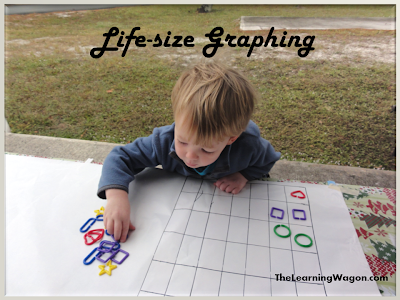Here’s an activity that was very
simple, but Caleb has enjoyed it repeatedly…
Materials:
Construction paper
Glue
Scissors
Laminator
Set-Up
Directions:
1. Cut out 2 copies of each letter
in your child’s name from the construction paper.
2. Cut out small hearts that will
fit on the letters you just cut. (You can skip this step if you choose to use
small heart stickers instead.)
3. Glue 1 copy of letters to a
sheet of construction paper in the order of your child’s name.
4. Glue or stick one small heart to
each letter. I alternated gluing the
hearts at the top and bottom of each letter to remove any confusion. Make sure
that you glue the hearts in the same location on matching letters. This is done
for two reasons. First, it shows your child which side is the front of the
individual letters. Second, it shows your child which way is right-side-up.
This seems redundant being that the letter itself is right-side-up, but my son
has played similar games in the past where he will match the letters correctly,
but without this cue they were placed upside-down right on top of the matching
letter. The visual discrimination is not there yet. He did not have any
problems matching the letters correctly once I directed him to use the hearts
as a guide.
5. Laminate the name paper and the
individual letters for durability. Then, cut out the individual letters.
Ways
to Play:
1. Hand your child a letter as you
say that letter’s name. Have your child place it on the matching letter in
his/her name.
 2. Place the letters in a bag. Have
your child pull out a letter. Say, “You pulled out the letter C!” Have your
child place it on the matching letter in his/her name.
2. Place the letters in a bag. Have
your child pull out a letter. Say, “You pulled out the letter C!” Have your
child place it on the matching letter in his/her name.
3. Place the letters in a bucket.
Cover the letters with sand, rice, heart confetti, or a different medium. Have
your child sift through the medium to find each letter. When your child finds a
letter, name it for him/her. Have your child place it on the matching letter in
his/her name.
4. Place all the individual letters
on a table and mix them up. Point to the first letter in your child’s name on
the paper and ask your child to find the letter you name.
5. To build fine motor skills, add
some play dough into the game. Have your child pull dabs of play dough and
place them on the first letter to cover it. Then, have your child place the
individual letter on top of the play dough like a sandwich.
It’s beneficial for your child to
play the same game repeatedly, but keep the engagement of your child high by
adding novelty to the game when you see interest beginning to fade. Do you have
any other suggestions to keep the novelty appealing?
God Bless your Learning Days,






















